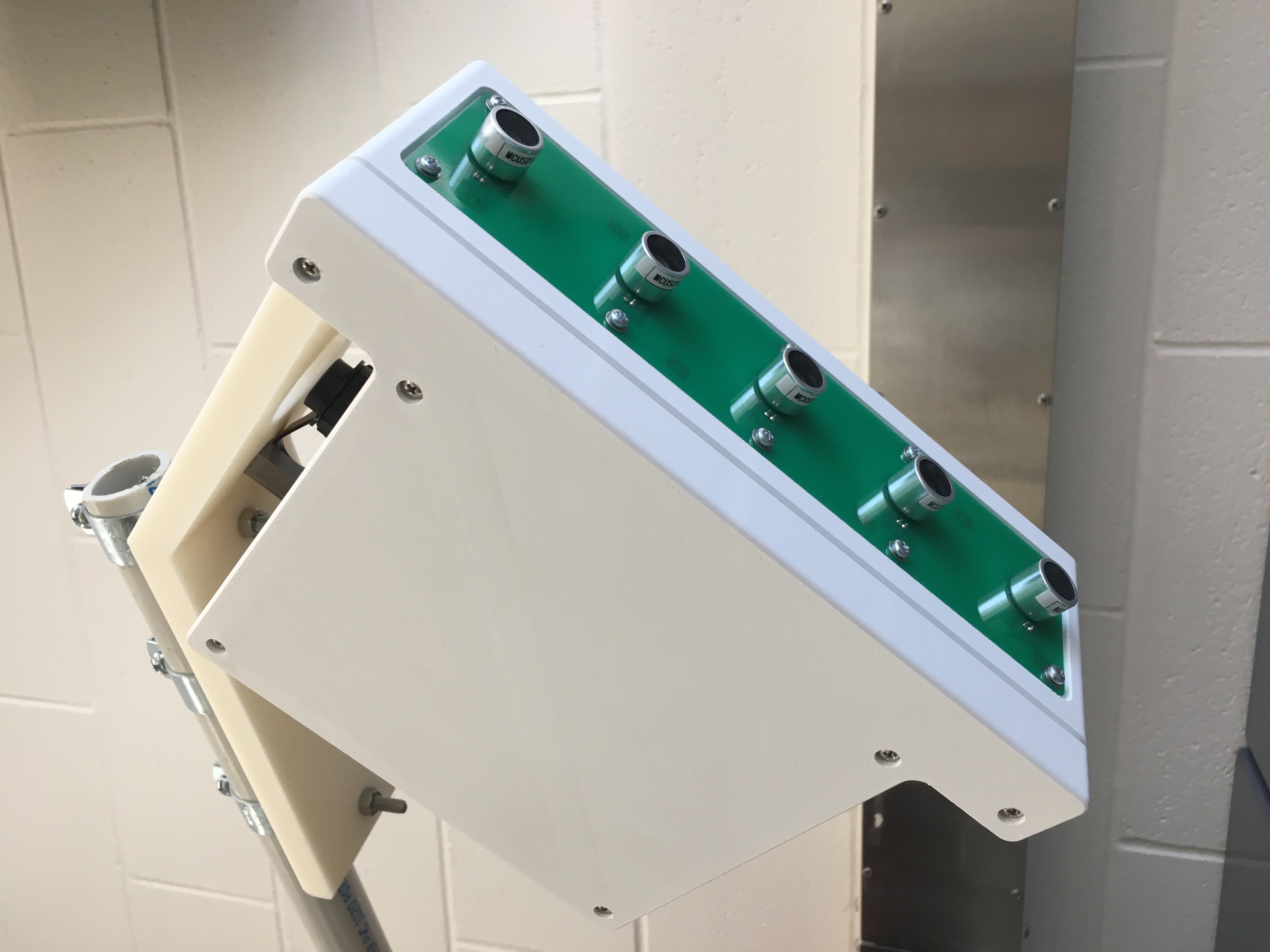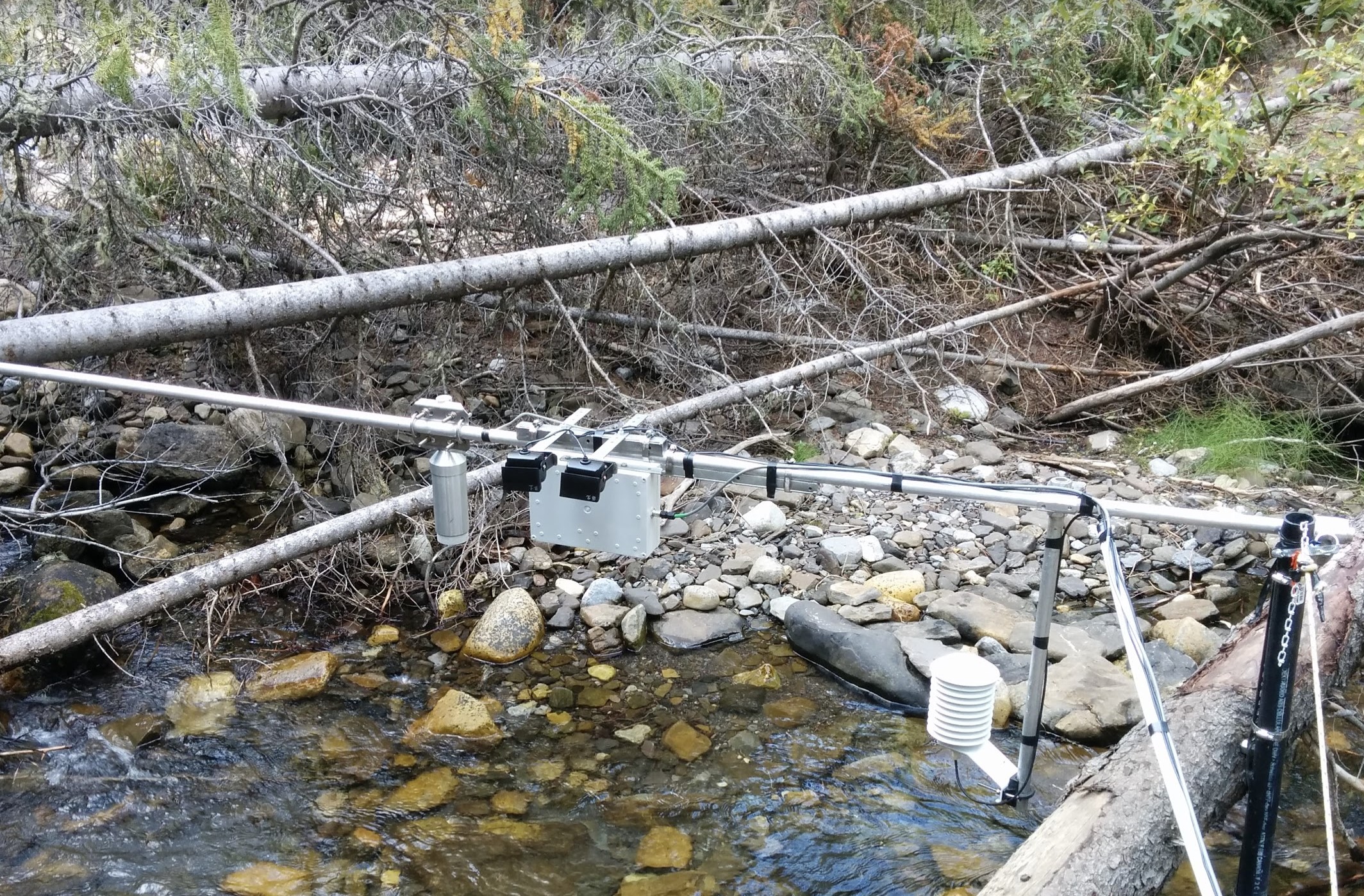Achelous
- Ultrasonic streamflow sensors are often used to measure stream and river velocity.
- These conventional sensors are installed in the channel and are therefore prone to destruction during high-magnitude discharge events.
- Achelous utilizes an array of ultrasonic sensors situated in the air above a river channel.
- Time-of-arrival differences between transducers and Doppler shifts from water surface reflections are used to measure stream velocity and stage.
- A novel algorithm is used to correct for temperature gradients above the river channel that influence the measurements.
- The first prototype was finished in May of 2019 using 3D designed and printed parts in the SWSL lab.
- Further development of the circuit to have the ability to measure hydroclimatic variables is being conducted.
- An initial prototype of the sensor was tested at Marmot Creek, Alberta and a prototype of the system is slated for deployment on the Borden Bridge near Saskatoon.
- Developments to this sensor since first prototype include a higher SPL (sound pressure level) by increasing the peak-to-peak voltage across the ultrasonic transmitting transducer so that distance, river stage, relative humidity, and air temperature measurements can be made effectively over the distance above the water surface.

Achelous sensor with 3D printed enclosure showing multiple transducers

Initial prototype of Achelous sensor tested on Marmot Creek, Alberta. Also visible in the image is a commercial ultrasonic depth sensor and a shielded temperature / RH sensor for comparison measurements.
